The Top 10 Businesses in 2025 Using AI to Promote Sustainable Innovation
By 2025, sustainability will no longer be a buzzword but a required business practice. As the global climate crisis gets worse, companies in various industries are being compelled to take into account their environmental impact. Nevertheless, a considerable change is underway: Artificial Intelligence (AI) is progressively becoming the primary source of sustainability, enabling companies to optimize resources, reduce emissions, and accelerate the transition to a greener earth faster.
AI for sustainability is the major lever that will keep the planet alive in the long run through cleaner, more efficient, and smarter innovations. In fact, it is used in the prediction of energy consumption and the creation of climate-resilient materials. Leading enterprises worldwide are now integrating AI into renewable energy systems, green production, carbon tracking, and nature recovery projects, thus showing that technology and ecology are not necessarily mutually exclusive.
These are the top 10 companies in 2025 that are using AI to go beyond the limits of sustainable innovation.
1.Google: AI-Powered Energy Optimization and Carbon-Free Goals

For over a decade, Google has been a trendsetter worldwide in environmentally friendly development and will continue to be a leader by 2025. The giant from Silicon Valley uses AI-driven energy management solutions to keep its data centers and offices very energy-efficient.
Innovations of the Key:
Energy Efficiency Using DeepMind AI: Google’s DeepMind AI forecasts energy needs and consequently cools and powers the equipment that is most efficient, thereby cutting energy use by up to 30% in data centers.
Zero-Carbon Operations: The company’s goal is to use only carbon-free energy by 2030, and AI is an indispensable tool in that case, as it helps predict renewable energy that can be harnessed from solar and wind farms.
AI for Supply Chain Transparency: The sustainability solutions provided by Google Cloud use suppliers’ emissions data for the purpose of supply-chain tracking and thus help firms in building green supply chains.
Thanks to AI, Google has been able to reconcile things like technological expansion and eco-friendliness, something that most people thought unfeasible.
2. Microsoft: Using AI to Model Climate and Capture Carbon
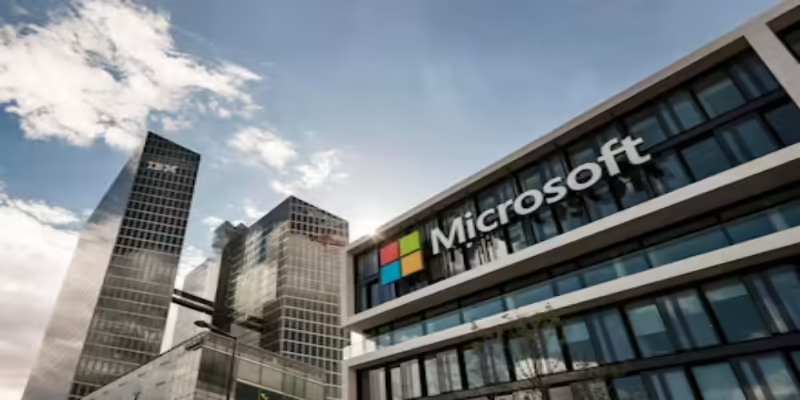
Microsoft has pledged to become carbon negative by 2030 as part of its effort to use AI as a tool to address environmental issues. The company's AI-driven scenarios are the key instrument for this research in climate science, carbon capture, and renewable energy optimization.
Key Innovations:
AI for Earth Program: The program is a worldwide challenge that funds over 850 environmental projects that implement machine learning in such fields as agriculture, biodiversity, and climate prediction.
Planetary Computer: A global-scale platform using AI, the freshest satellite data, and cloud computing to keep track of the earth’s ecosystems and determine the earth’s health through deforestation, drought, and loss of biodiversity.
AI-Driven Carbon Removal: The AI models of Microsoft help the company to find the best carbon removal techniques and to make their use most efficient at a large scale.
Through programs like AI for Earth, Microsoft is going beyond the mere reduction of its carbon emissions; it is allowing governments, NGOs, and startups to make faster progress in their sustainability goals.
3. Tesla: Artificial Intelligence in Renewable Energy and Electric Vehicles
 Tesla is leading the way in AI innovations that contribute to clean energy. The business is blending artificial intelligence with eco-friendly technology to not only make electric transport and green energy feasible but also very simple to scale.
Tesla is leading the way in AI innovations that contribute to clean energy. The business is blending artificial intelligence with eco-friendly technology to not only make electric transport and green energy feasible but also very simple to scale.
Key Innovations:
Autonomous Energy Management: By AI, Tesla can forecast solar energy generation and battery consumption, thus the system of Powerwall and Powerpack can work at the highest level of efficiency.
AI-Powered Manufacturing: Intelligent AI models lessen the material wastage in the production of electric vehicles (EVs) and keep track of the carbon footprint of supply chains.
Ecological Transportation: AI is the main driver in Tesla’s Full Self-Driving (FSD) system, which helps in route optimization, thus alleviating traffic congestion and cutting down on fuel emissions in hybrid city grids.
Tesla keeps on demonstrating that by using AI as a tool throughout its clean energy ecosystem, sustainability, coupled with innovation, can be a win-win scenario for the company.
4.IBM: AI for Climate Resilience and Green Computing
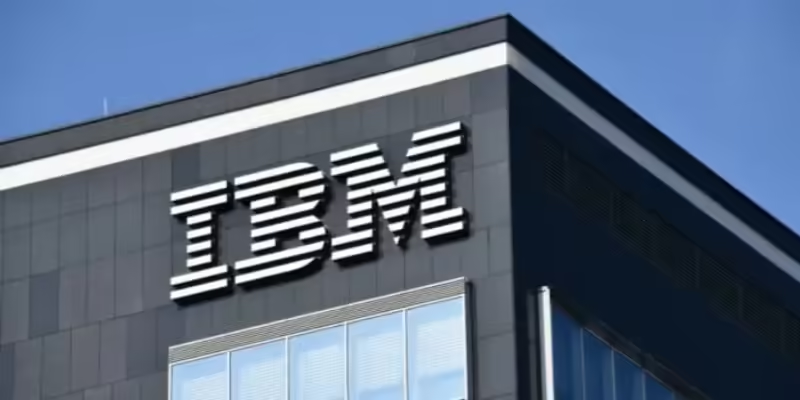 With AI, IBM is making a significant impact by delivering realistic, data-driven solutions that help various sectors progress towards environmentally friendly practices.
With AI, IBM is making a significant impact by delivering realistic, data-driven solutions that help various sectors progress towards environmentally friendly practices.
Core Innovations:
Green Horizon Project: AI models of IBM utilize weather and pollution data to forecast smog levels, and consequently, a city’s air quality is optimized.
AI for Water Conservation: The Watson Decision Platform for Agriculture is an intelligent system that guides farmers in water usage reduction while the quality of the yield stays high.
Sustainable IT Infrastructure: As a result of IBM’s investment in research for quantum computing and green data centers, the energy consumption of large-scale enterprises all over the world is being gradually reduced.
IBM’s commitment to the development of scalable AI models for sustainable applications in the real world, particularly in the areas of water, energy, and climate, positions the company as a major player in technological environmentalism.
5.Siemens: AI-Driven Smart Cities and Clean Manufacturing
Through the extensive use of AI across its manufacturing and infrastructure solutions, Siemens, a worldwide leader in industrial automation, is driving sustainable urbanization.
Key Innovations:
AI in Smart Grids: Siemens implements predictive analytics to handle energy distribution in the most efficient way; thus, short circuit losses are practically eliminated in urban grids.
Eco-Friendly Manufacturing: Siemens Digital Twin platform is a technological solution that uses AI to simulate factory operations, pinpoint inefficiencies, and lower pollutants.
Sustainable Transport Solutions: Siemens Mobility avails AI for on-the-fly route optimization and the ensuing reduction of carbon emissions from public transportation systems is the case in point for cities across the globe.
It is through the combination of industrial intelligence with green innovation that Siemens has risen to become a bridge of the worldwide AI-driven sustainability movement.
6. Ocean Cleanup is IBM's partner company: AI for Waste Reduction
The Ocean Cleanup is a concept that uses AI and robots to rescue the oceans from garbage. With their technological devices, they can take out plastic waste from both oceans and rivers from any part of the globe.
Core Innovations:
AI for Trash Identification: Machine learning models run by the system analyze satellite images to detect areas with the highest concentration of plastic waste.
Smart Cleanup Systems: Using AI as the brain, the ships go about their work autonomously and are thus able to pick up debris in the water with very little or no fuel at all.
Data-Driven Recycling: AI-powered systems are used for plastic classification that has been collected in order to facilitate recycling and material recovery.
Through a partnership with AI, environmental engineering, and the Ocean Cleanup, is a shining example of how ecological AI solutions can be employed to revive the earth's ecosystems.
7. Schneider Electric: Smart Energy and AI for Sustainability
Once a firm that made it to the list of the most sustainable globally, Schneider Electric is now employing AI to radically transform energy efficiency and reduce carbon emissions in industrial and commercial operations.
Key Innovations:
EcoStruxure AI Platform: Tracks energy usage down to the last unit continuously and automatically adjusts building control for the most efficient energy use. Renewable Energy Integration: AI comprehends and forecasts energy needs, then matches them with available renewable energy, thereby reducing the use of fossil fuels.
Sustainability-as-a-Service: With the help of AI-powered analytics dashboards, Schneider is enabling organizations to lower their carbon footprints.
By their AI deployments, clients have been able to reduce their energy consumption by up to 35%, thus making Schneider the leader and the example for other AI-driven sustainability practitioners.
8. Amazon: AI for Renewable Energy and Smart Logistics
 In the past, Amazon was not without its share of criticisms regarding its carbon emissions, but by 2025, it had taken big steps in harnessing AI for eco-friendliness.
In the past, Amazon was not without its share of criticisms regarding its carbon emissions, but by 2025, it had taken big steps in harnessing AI for eco-friendliness.
Important Innovations:
AI in Renewable Energy Procurement: Amazon Web Services (AWS) utilizes AI to forecast the amount of renewable energy generated by wind and solar power plants. This allows the company to optimize its energy purchase strategies.
AI-Powered Logistics Optimization: To reduce the total fuel consumption of delivery vans, deep learning-powered routing optimization algorithms are being utilized.
Sustainable Packaging Initiative: AI-powered algorithms are facilitating the changes in packaging that aim at lessening the material consumption as well as making the packaging more recyclable.
Through the use of technologies and programs like The Climate Pledge, Amazon is planning to be net-zero carbon by 2040, thus proving that big scale and sustainability can be combined.
9. Enel Group: Artificial Intelligence in Energy Efficiency and Smart Grids
The globally active power company Enel Group, based in Italy, is a global leader in clean energy. It uses artificial intelligence (AI) to manage the global network of interlinked hydro, wind, and solar plant systems.
First of all:
Predictive Maintenance for Clean Energy Facilities: AI is able to spot the most minute and earliest parts of a mechanical breakdown in a wind or solar module, thus preventing the loss of energy.
Smart Grid Optimization: Using machine learning, supply and demand are dynamically balanced in Enel's renewable energy infrastructure, which is spread across 30-plus countries.
Energy AI for Forecasting: The use of cutting-edge analytics makes it possible to predict the output of renewable sources and to meld effortlessly with the national grids so that there will not be any shortages in energy.
Enel has actually been very successful in this feat – in just a matter of three years from 2022 to 2025, they have managed to save millions in operational costs and at the same time reduce carbon emissions significantly, a clear demonstration of how AI integration in renewable energies works as the driver for a sustainable turnaround at scale.
10. NVIDIA: Building the AI Ecosystem to Fight Climate Change
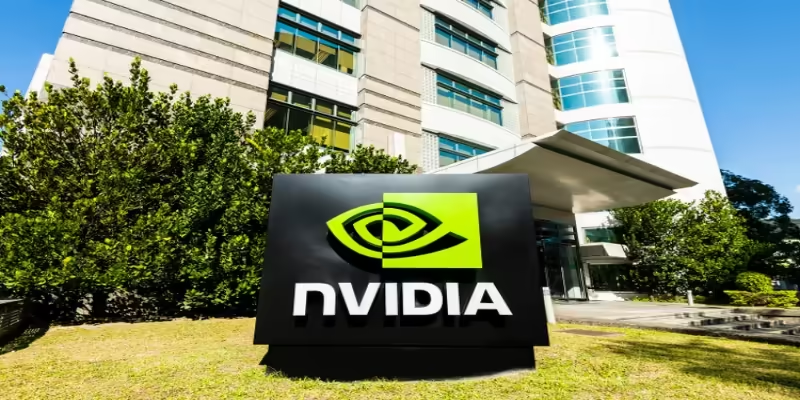 Despite being well-known for its GPUs, NVIDIA has primarily contributed to the global environmental sustainability goal with its AI computing platforms.
Despite being well-known for its GPUs, NVIDIA has primarily contributed to the global environmental sustainability goal with its AI computing platforms.
Open innovations:
NVIDIA Earth-2: A climate modelling AI mega-computer that enables us to grasp and forecast climate change with a level of accuracy never before possible.
AI chips that are power-saving: The new NVIDIA architectures are aimed at very high performance with the least power consumption.
AI for Renewable Infrastructure: NVIDIA partners with energy companies to develop AI models that enable solar and wind power to deliver maximum performance.
Through revolutionary hardware and software innovation, NVIDIA is the energy that drives AI systems, which in turn are the root of sustainability solutions in different industries, whether it is clean energy or precision agriculture.
The Impact of AI on the Global Sustainability Movement
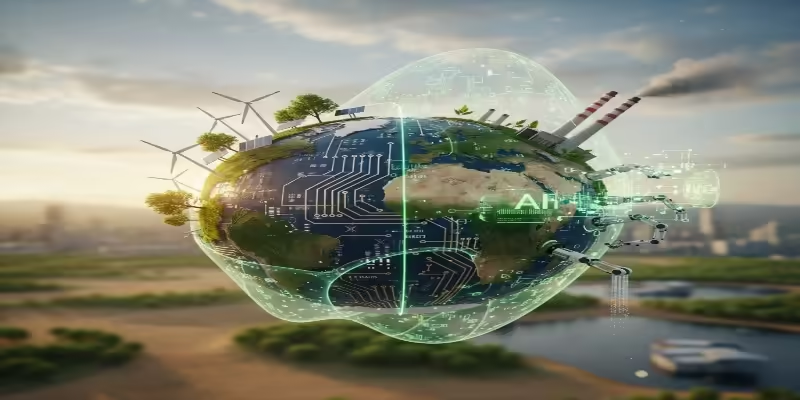 AI’s role in sustainability goes beyond the scope of corporate innovation; it is becoming a must-have worldwide. The following is just a fraction of the whole picture:
AI’s role in sustainability goes beyond the scope of corporate innovation; it is becoming a must-have worldwide. The following is just a fraction of the whole picture:
1. AI in Renewable Energy
Thanks to AI, utility companies are able to foresee solar and wind power production, make their networks more stable, and accurately predict energy demand. The International Energy Agency (IEA) states that by 2025, the implementation of AI will have led to renewable energy efficiency being raised by as much as 25%.
2. Climate Prediction and Disaster Management
Using AI-guided models, it becomes possible to identify sudden weather changes in advance, and thus, governmental agencies have sufficient time to arrange evacuations and erect sturdy infrastructure.
3. Resource Optimization
AI technology has been instrumental in monitoring the water usage of industries, the distribution of fertilizers in agriculture, and the recording of waste management practices with the aim of upgrading these sectors, making fewer emissions and other forms of pollution to nature.
4. Environmentally Friendly and Ethical Producers
After implementation of AI Environmental, Social, and Governance (ESG) monitoring instruments, companies have been able to guarantee morally correct sourcing, lessen carbon output, and strengthen trustworthiness not just locally but also across supplier networks by way of sharing information.
5. Circular Economy Integration
With the help of AI, there is identification of recycling materials, recording of the life span of goods, and facilitation of transition into a zero-waste economy.
Challenges and Ethical Considerations
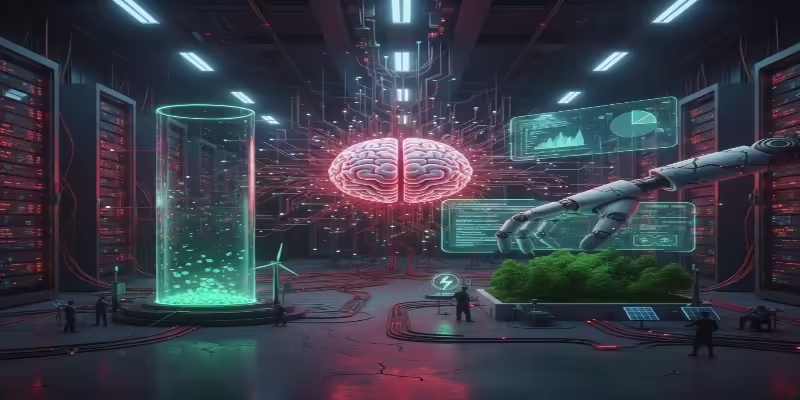 However, AI also has some difficulties besides its huge potential for sustainability:
However, AI also has some difficulties besides its huge potential for sustainability:
1. Energy Consumption of AI Models: Large-scale AI models require a large amount of computing power, which in some cases can negate the environmental benefits.
2. Data Gaps in Emerging Economies: The majority of the developing countries do not have enough environmental data to enable AI to work efficiently.
3. Bias and Transparency: The ethically correct AI implementation has to guarantee that the environmentally related decisions by AI are fair and can be logically clarified.
4. Over-Reliance on Automation: Human supervision is still necessary to ensure that AI-driven sustainability is socially and ecologically viable in the real world.
Therefore, organizations have to ensure that their AI systems are sustainable themselves by employing energy-efficient architectures and data centres powered by renewables.
The Future: AI as a Global Sustainability Partner
 After 2025, the sustainability challenge of the future will be solved by cooperation between AI and humans. What would be seen are:
After 2025, the sustainability challenge of the future will be solved by cooperation between AI and humans. What would be seen are:
Investments in clean tech are climate finance platforms driven by AI.
Community-based renewable microgrids managed by decentralized AI systems.
Environmentally friendly self-learning systems are able to make their environmental performance better without human intervention.
With such a combination of AI breakthroughs and eco-intelligence, the globe can transit to a regenerative economy, one that doesn't damage but rather restores the earth.
Conclusion: Technology as the Heartbeat of Sustainability
The top companies of today, be it Google, Microsoft, NVIDIA, or Enel, are the ones to demonstrate that AI for sustainability is not a concept of the far future but rather is a very real, measurable, and active reality. These companies are not only leveraging technology to increase productivity but also to completely change what a responsible business in the 21st century should look like. They are basically turning the sustainability challenge into their biggest opportunity, as they embed AI at the core of their sustainability strategies; thus, they are converting the data into action, insight into innovation, and innovation into impact.
AI-powered mechanisms are being employed to forecast energy consumption, minimize carbon emissions, optimize supply chains, and conserve biodiversity. AI is enabling industries to become environmentally responsible in ways that were unimaginable before, from smart grids that stabilize renewable energy use to intelligent devices that monitor deforestation.
AI will also continue to improve and thus will open up even more opportunities to solve the most complicated environmental challenges of the planet in a precise, creative, and purposeful way. The next stage of evolution will depend on how well we integrate technological intelligence with ecological wisdom.
The path to progress in 2025 and later years is summed up by a simple equation:
Environmental Intelligence + Artificial Intelligence = A Sustainable Future.
As businesses and investors get on board with this common vision, the journey towards a world where growth and sustainability are possible together not fighting each other but rather complementing each other is becoming shorter.